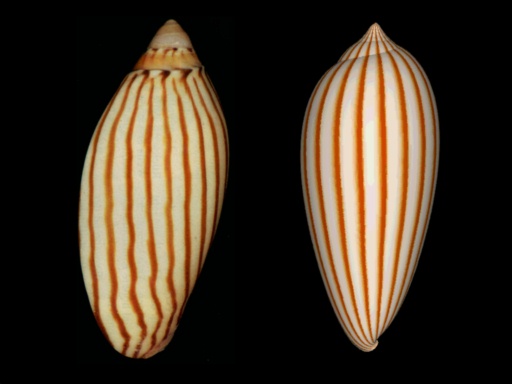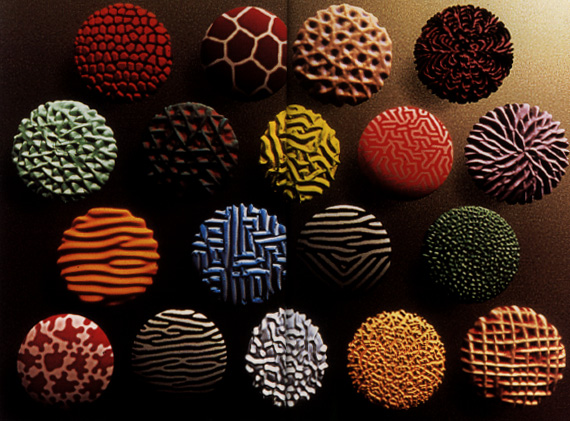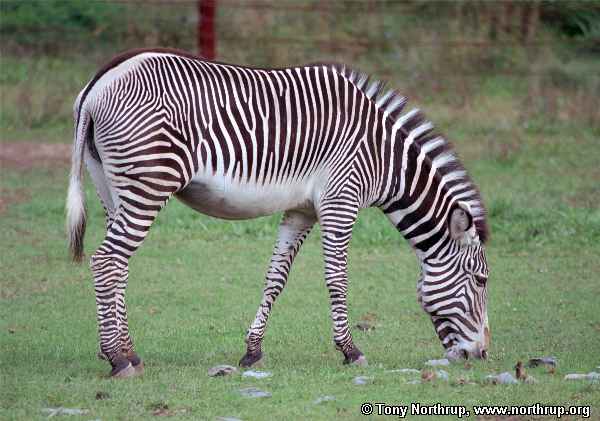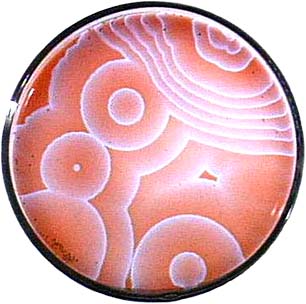Undergraduate research opportunities
"I
do not know what I may appear to the world, but to myself I seem to
have been only a boy playing on the sea-shore, and diverting myself in
now and then finding a smoother pebble or a prettier shell than
ordinary, whilst the great ocean of truth lay all undiscovered before
me." Isaac
Newton
"A mathematician, like
a painter or a poet, is a maker of patterns. If his patterns are more
permanent than theirs, it is because they are made with ideas." G.H.Hardy
My research areas
are partial differential equations, dynamical systems and applications
of biology, chemistry, physics. Partial differential equations (PDE)
are traditional mathematical models for physics, chemistry and
engineering problems based on the differential and integral calculus
developed by Issac
Newton . In a PDE model, physical quantities are assumed to be
continuous and differentiable functions depending on several variables
such as the time, spatial coordinates. Examples of such functions are
concentration and density functions of chemical or biological
organisms. The rates of change with respect to various variables and
physical laws yield partial differential equations. In early years,
PDEs are mostly used to model physical phenomena, such as heat equation, wave equation,
Navier-Stokes
equations in fluid mechanics (which is one of the Millennium Prize Problems). However the
applications of PDEs now include biological sciences, economics,
finances, and many other subjects requiring qualitative analysis.
My current interests are on the spatial-temporal models of biological
and chemical systems. An important class of models is the
reaction-diffusion equations based on the diffusion mechanism and
reaction/interacting of different species. The famous scientist Alan
Turing proposed to use reaction-diffusion
equations to study the chemical mechanism of morphogenesis,
which becomes one of important foundation of nonlinear sciences today.
(The graph on upper right is a computer simulation of the pattern
generated by Turing type equation.) Reaction-diffusion equations
nowdays have wide applications from the pattern of the seashell (upper
left graph), mixing of river water (upper middle), the wave pattern in
chemical reaction (lower right), to the stripes on the body of zebra.
With reaction-diffusion
equations and computer, you can design your favorite patterns by
yourself (see lower left).
Possible
undergraduate research topics:
1. Consider the Discretized CIMA chemical system in 1-D, and use Matlab
and MatCont to obtain global bifurcation diagrams of equilibrium and
periodic solutions.
2. Consider another system: reaction-diffusion predator-prey system for
the similar questions
3. Consider the impact of spatial heterogeneity (synchronization of
coupled oscillations)
4. Bifurcation in water-limited reaction-diffusion-advection systems
(traveling band solutions)
5. Higher dimensional reaction-diffusion systems (2-D: planar lattice)
Student research will be partially supported by National Science Foundation grants DMS-0703532(CSUMS: Computational Science Training for
Undergraduates in the Mathematical Sciences), and
EF-0436318 (UBM: Undergraduate Research in Metapopulation
Ecology). Please contact me for applications of the support (or Dr.
Li for CSUMS support, or
Dr.
Dan Cristo for UBM support).
You can work on some problems from topics above, or work on some topic
of your own choice, such as developing and analysing a mathematical
model in your area of interest. For the mathematical background of the
research, you should have completed either Math
345
Mathematical
Models in Biology or Math 302 Differential
Equations when you start the project. Fo some projects, you can take Math
490 PDE
and Mathematical Biology as a training course on the basic
knowledge on reaction-diffusion equations, and Math 413/414 Numerical Analysis for
numerical helps.
Previous
undergraduate projects
(an author with * is undergraduate student, and with ** is
a W&M undergraduate)
1. Bifurcation for population models with nonlinear diffusion (spring 2004, supported by NSF
DMS-0314736)
Young He Lee,
Lena
Sherbakov, Jackie Taber
Bifurcation
Diagrams
of Population Models with Nonlinear Diffusion (Young He Lee**,
Lena
Sherbakov**, Jackie Taber**, Junping Shi)
(Journal of
Computational and Applied Mathematics,
Vol. 194, no. 2, 357--367, 2006.)
Lena
Sherbakov went to University of Washington for PhD in Applied Math,
Jackie Taber stayed in W&M for COR master program.
2. Models of
Water-limitted ecosystems (spring
2006, supported by NSF DMS-0314736)
Kristina Little
Cross-diffusion
induced instability
and stability in reaction-diffusion systems (Junping Shi, Zhifu
Xie,
Kristina Little**) (submitted)
Kristina Little went to University of Virginia for PhD in
Bioengineering.
3. 2-D radial
solutions of Fisher equation (spring 2006)
Fumie Hirata
An approximate solution to higher dimensional Fisher equation (Fumie
Hirata*, Junping Shi)(preprint)
Fumie
Hirata was an exchange master student from Keio University, Japan.
4. Numerical
calculation of radial solutions of coupled Schrodinger
equations background material
(summer 2008, supported by CSUMS:DMS-0703532)
Michael Essman
Bifurcation
diagrams of coupled Schr\"odinger equations (Michael
Essman**, Junping Shi) (submitted)
presentation
in GMU-WM
2009 Spring Workshop (3/21/2009)
poster
presentation in 2010 Joint Mathematics Meeting (Jan/2010)
W&M Honor thesis: 2009-2010
Michael Essman is a NASA research assistant in summer 2009 in Hampton,
VA.
5. Three pool
model of Calcium signaling (summer 2008, supported by UBM:EF-0436318 and CSUMS:DMS-0703532)
Daniel Hariprasad
Three
pool model of Calcium signaling (Daniel Hariprasad**, Meagan
McNulty, Junping Shi, Paul Tian) (submitted)
presentation
in GMU-WM
2009 Spring Workshop (3/21/2009)
W&M Honor thesis: April 2009
Daniel Hariprasad is now in University Arizona for PhD in Applied
Mathematics (2009).
6. Bifurcations
in CIMA reaction model (summer 2008)
Jiayin Jin
Bifurcations
of Patterned Solutions in Diffusive Lengyel-Epstein System of CIMA
Chemical Reaction (Jiayin Jin*, Junping Shi, Junjie Wei, Fengqi Yi)
(submitted)
presentation in 2008 Harbin Differential Equation Conference (Dec/2008)
Jiayin Jin is now in Michigan State University for PhD in Mathematics
(2009).
7. Alternating
stable states in oyster population model (summer 2009, jointly
with Rom Lipcius, Jian Shen, Paul Tian, supported
by UBM:EF-0436318 and CSUMS:DMS-0703532)
Will Jordan-Cooley
poster
presentation in 2010 Joint Mathematics Meeting (Jan/2010)
presentation in GMU-WM 2010 spring Workshop (4/17/2010),
W&M Honor thesis: 2009-2010
8. Bifurcation of
Oscillatory and Spatial Patterns
in a Diffusive
Predator-Prey System (summer 2009, supported
by Charles Center BioMath Fellowship)
Yuanyuan Liu
presentation in GMU-WM 2010
spring Workshop (4/17/2010),
W&M Honor thesis: 2009-2010
9. (summer
2010, supported
by Charles Center BioMath Fellowship) Ruoyan
Sun
10. (summer 2010, supported by CSUMS:DMS-0703532) Matt Becker
11. (summer 2010, supported by CSUMS:DMS-0703532) Tim Becker
Softwares
Matlab, Pplane(a Matlab
package for phase plane), MatCont
(a Matlab package for bifurcation/continuation), AUTO, XPPAUT,
The courses I taught on applied
mathematics
Math 490 PDE
and Mathematical Biology (Spring
2002, Spring 2004, Spring 2006, Spring 2009) Lecture
notes of Math 490
Math 441 Applied
Mathematics (Fall 2002)
Math 345 Mathematical
Models in Biology (Fall 2006) (or Math 410
before 2004)
Mathematical
Models in Biology
(Fall 2001)
My publications
The powerpoint file of an undergraduate leecture on Pattern
formation in mathematical biology (partly in Chinese)
Some
population science books related to mathematical biology and
differential equations
Life's
Other Secret: The New Mathematics of the Living World (Paperback)
by
Ian
Stewart
Mathematics
in Nature : Modeling Patterns in the Natural World (Hardcover)
by
John
A. Adam
Celestial
Encounters (Paperback)
by Florin
Diacu and Philip
Holmes
Sync:
How Order Emerges from Chaos in the Universe, Nature, and Daily Life
(Paperback)
by
Steven
Strogatz
Linked:
How Everything Is Connected to Everything Else and What It Means
(Paperback)
by
Albert-Laszlo
Barabasi








